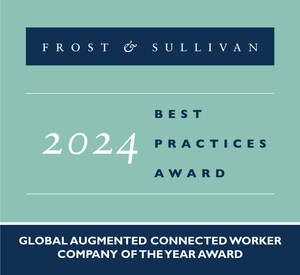Frost & Sullivan: Major Drug Companies are Securing an Edge by Leveraging the 505(b)(2) Pathway
NEW YORK, Nov. 5, 2019 /PRNewswire/ -- The discovery and development of new drugs is a long, difficult, and expensive process. A potential new medicine may be rejected at any point in the development process due to safety, efficacy, or quality. Only 1 in 10,000 compounds tested actually make it through to become a licensed treatment. For drug companies, the reality is that it takes 10–15 years to develop a successful drug along with a budget that can exceed $2.6 billion[1] [2].
But as more and more of these companies are finding out, it does not have to be this difficult. The arduous slog described above is typically performed for new chemical or biologic entities via the FDA's standard 505(b)(1) regulatory pathway. But, there is a far more tenable route. New drug products may be approved under the 505(b)(2) pathway if the active ingredient (API) has already been approved (i.e., not a New Chemical Entity). This pathway permits development of the new drug to rely in part on data from existing reference drugs, allowing for both development and FDA approval in as little as 30 months and at much lower costs[3].
The 505(b)(2) represents an appealing regulatory strategy for some companies, and the only viable strategy for others. This creates an abundance of newfound time and money. By utilizing previously completed research as part of an FDA submission, companies can reduce their cost on a new drug application (NDA) via the 505(b)(2) pathway from potentially several billions of dollars to just tens of millions. But beyond time and money, this can mean the difference between new, groundbreaking drugs entering the market in the near future versus years down the line. The consequences are enormous both for the pharmaceutical companies and patients. To compound this effect, even many regulatory companies have allocated their efforts towards this pathway, making it a trend impossible to ignore2.
Entera Bio Ltd. (NASDAQ: ENTX) is a great example of the advantages of utilizing the 505(b)(2) pathway. Entera is a product-focused biotechnology company that took the FDA approved injectable PTH(1-34), which is used to treat osteoporosis and is developing an orally deliverable form of PTH(1-34). It contains the same API as Forteoâ (Eli Lilly) which requires daily subcutaneous injection and is a member of the bone anabolic group of osteoporosis drugs, all of which are given by injection, increasing product costs and reducing patient acceptance and compliance. Entera has a platform that allows for the oral administration of pharmaceutically active large molecules and biologics that would otherwise need to be injected. In addition to the development of oral human PTH(1-34) for osteoporosis patients, Entera is carrying out several other clinical trials and entered into a strategic agreement with AMGEN.
The $7.8 billion osteoporosis drug market (2019[4]) is mainly dominated by two injectable drugs: Forteo® (human PTH(1-34) by Elli Lilly), and Prolia® (Denosumab), that is a RANK ligand (RANKL) inhibitor and fully humanized monoclonal antibody that inhibits bone resorption. Two other injectable osteoporosis anabolic products, Tymlosâ (abaloparatide; Radius) and Evenityâ (romosozumab; Amgen) are both expected to grow following their recent launches. Development of oral versions of osteoporosis anabolic products has not been reported yet. By using the 505(b)(2) pathway Entera is estimated to save 2-3 years of development and potentially more than $100 million USD in costs as it aims to penetrate this significant market.
Having said this, the pathway is not always applicable. The decision for companies of any size to develop a drug using this route depends critically on the nature of the product under development. Only some applications are allowed to pursue the 505(b)(2) pathway such as new formulation, new dosage form, new route of administration, modified pharmacokinetics, new combination, new indication, new dosing regimen and strength.
Companies seem to be catching on at a faster rate. In 2017, the FDA approved more 505(b)(2) applications than ever before. These 63 approvals represent a 40% increase over the previous year, and exceed the number of novel drug approvals by more than 25%. Most of the drugs approved via the 505(b)(2) pathway in 2017 were in the fields of Anti-infective, pulmonary, cardiovascular, metabolism, and endocrinology and oncology[5].
Additional examples of companies that decided to use the 505(b)(2) pathway for development include:
- Abraxane (Paclitaxel) for the treatment of breast cancer by Celgene that changed the formulation to nanoparticles and led to minimizing adverse effects and enhanced efficacy. The approximate peak annual sales were $682M.
- Vimovo (Naproxen/esomeprazole) by AstraZeneca and Aralez offered a new sustained release combination of the drugs with esomeprazole reducing the risk of gastric ulcers produced by naproxen. The approximate peak annual sales were $612M.
- Duopa (carbidopa and levodopa) by AbbVie offered a new dosage form of an "old" combination product for Parkinson's treatment. The company's revenues for the first 9 months in 2017 were $255M.
Experts expect that the number of companies that consider following the 505(b)(2) pathway will continue to increase mainly due to the huge financial impact they can gain.
The return on investment, relatively speaking, is night and day. Simply put, if under the aforementioned umbrella of approval, 505(b)(2) is the best bottom-line strategy for many pharmaceutical, biotech, and generic companies to seek new opportunities. Although this pathway necessitates the new use of compounds already available, it does not mean that a drug approved through this pathway is a simple generic version of a previously approved product; rather, it must be an entirely new product. This is a pivotal distinction, as it allows the drug to possibly reach additional patients and perhaps be an improvement over a currently available treatment[6]. As such, it is much more than a fast track of sorts – it is a new frontier in the drug industry.
Media Contact:
Dr. Hadar Cohen-Halevy
Frost & Sullivan
+972-(0)-9-950-2888
[email protected]
[1] International Federation of Pharmaceutical Manufacturers & Associations, Facts & Figures 2017
[2] https://www.mstrust.org.uk/a-z/drug-development-process
[3] https://camargopharma.com/assets/general/whitepapers/camargo-white-paper-why-more-drugs.pdf
[4] Evaluate Pharma
[5] https://www.sciencedirect.com/science/article/pii/S135964461830120X
[6] https://camargopharma.com/assets/general/whitepapers/camargo-white-paper-why-more-drugs.pdf
SOURCE Frost & Sullivan

WANT YOUR COMPANY'S NEWS FEATURED ON PRNEWSWIRE.COM?
Newsrooms &
Influencers
Digital Media
Outlets
Journalists
Opted In






Share this article